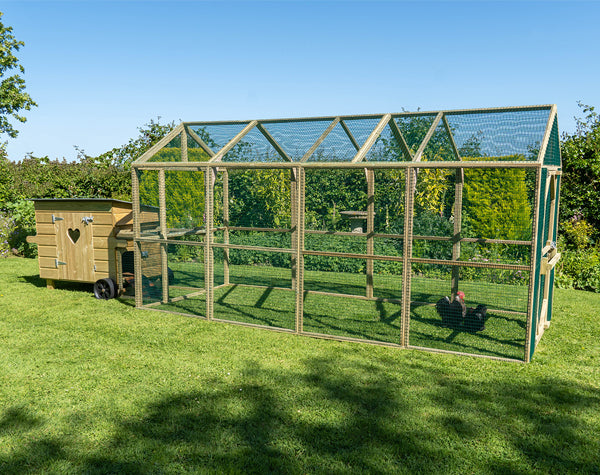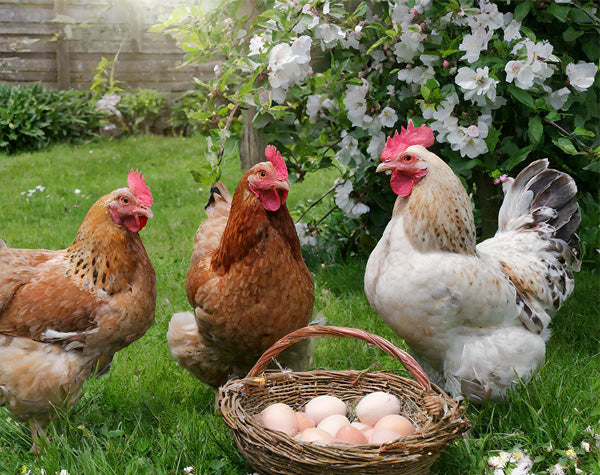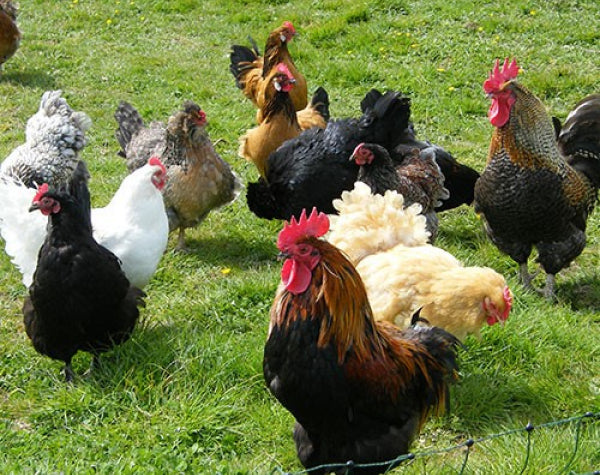Your Chicken House Purchase

Choosing the right Chicken House is probably the most crucial step in your chicken keeping journey.
Take your time to decide what is going to suit you.
The investment is in the knowledge that it will protect your birds, give you peace of mind and make life easy for you to look after them
The convention of what is required in a hen house is that:
- You should allow 1 sq ft of floor area per bird in a hen house
- It should have a large access door for you to be able to clean it easily and perhaps a removable floor or dirt tray
- The nest boxes should be low down and in the darkest part of the house so that the hens can lay in privacy and undisturbed
- Perches should be higher than the nest boxes, removable for cleaning, approx. 2 inches square - we use 38 x 50mm - with rounded edges.
- Allow at least 6 - 8in of perch space per bird and perches should be at least 8 inches apart. If the nest boxes are higher than the perches then the hens will sleep in the nest boxes (they instinctively want to roost at the highest point) and make them dirty, which is not ideal.
- Ventilation is also important, and best in the upper part of the house, to allow airflow throughout the house but the birds should not be perching in a draught.
What Type of Chicken House do I need?
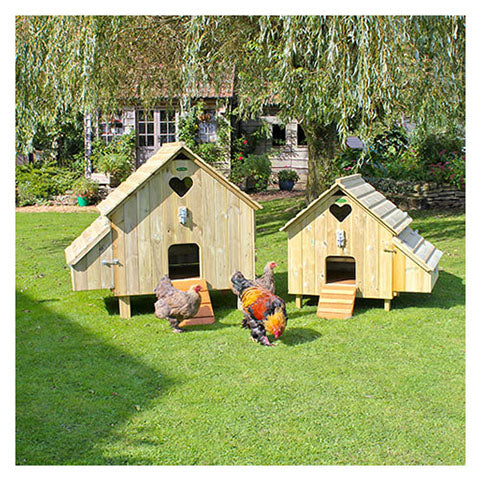
We would (naturally) always recommend timber housing and there are very good reasons for this.
All Flyte so Fancy Hen Houses are made using pressure treated timber. This means they will last for a considerable number of years without needing any preservative treatment (for more information see our Caring for Treated Timber page, What is Pressure Treated Timber, and our Warranty page).
Timber is a natural material so it will move and breathe with the seasons and therefore provide a healthy atmosphere for the birds. It will not be damp with condensation every time the temperature changes and will not suffocate them in summer or freeze them in winter.
We recommend that you check the house is made from timber that is not only pressure-treated, but also at least 19mm thick to avoid twisting and warping over time.
Any plywood used should be at least 9mm thick and of hardwood exterior grade or marine plywood. Otherwise, it will degrade and delaminate very quickly.
When considering your henhouse purchase some common-sense rules can avoid wasted money.
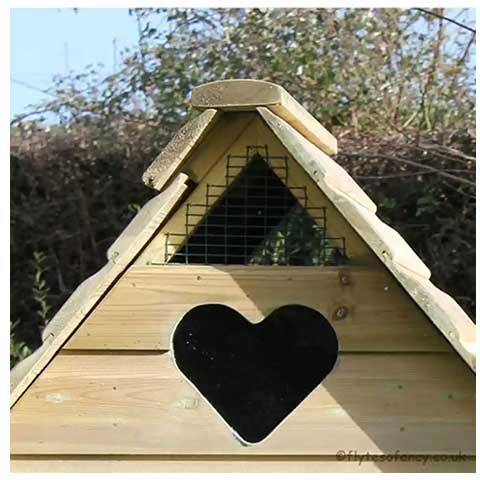
First and foremost is build quality. That is to say, you can spend £100 on a basic hen house (usually imported) that may last a year before degrading or spend £300 on a pressure-treated timber house to last over 20 years, but that does have a good resale value if you decide to change it after 5 years.
When viewing a henhouse, think about how it would be once the hens are living in it, and what it may be like after a year of hens living in it, and ask:
- Is it strong enough to withstand the 'traffic' of hens in and out every day?
- Is it made of thick, maintenance-free, pressure-treated timber i.e. shiplap or tongue and groove, so it can be outside in all weathers?
- Do you think that you could, with a clenched fist say, bash a hole in the walls (we are not for a moment suggesting you actually try this, just think about it)? If you could, then certainly a fox could get into the house without much effort.
- Is the roof made of thick timber so that it will not crack and leak and is it steep enough for the rain to run off easily? Onduline sheet is commonly used on hen houses. It is a robust roofing material but not as good looking as timber and can be prone to condensation.
- Is it raised off the ground so that rats cannot make their homes underneath the house?
- Will it help to keep the birds draught-free and comfortable in the coldest part of the winter?
- Are there any places in the design where it might leak in heavy rain?
- Will it blow over in high winds or is it solid and heavy?
- Is the headroom inside enough so that the birds are not cramped and will not suffocate in the heat of summer?
- Is it easy for you to clean and can you easily access all corners inside?
- How easy is it to move to fresh ground regularly?
- Can you imagine the number of birds you would like, living in that space inside?
- Would a determined fox, mink or badger be able to break his way into the house and kill your chickens?
- Is the pop-hole around 30cm square, which would be needed for an average size chicken?
- Are there ventilation points for air movement or will the birds sleep in a draught? Air movement is vital to avoid a build-up of fumes and humidity. Don't forget the birds excrete ammonia and perching in a draught is not healthy.
Above all, consider the health, security, and comfort of your hens to make your chicken keeping experience a good one. Your budget will naturally play a huge part so invest wisely and you will reap the rewards.
Chicken Runs and Security
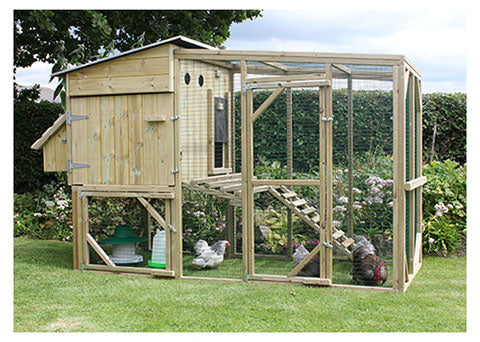
To keep your lovely hens secure from foxes, badgers, mink, or any other predator, a secure chicken run area should be a consideration.
This can be either an enclosed run attached to the hen house (shown here is a Flyte Aviary 6 Chicken Coop). Create a dedicated fenced area with the house inside or an electric poultry net that will keep them safe as well as give them plenty of space.
Although it may not suit everyone, we can recommend Electric Poultry Netting as a solution to chicken safety. We have used it successfully ourselves for many years.
Electric Poultry Netting is about 1m tall and is brilliant. A fox cannot dig under it without getting a shock, it can be moved when necessary and made into almost any shape you want, and it doesn't look like a prison camp.
Complete Electric Poultry Fencing Kits are available. There are other considerations with electric netting, but you can research it first here - How Electric Fencing Works.
There are other Anti-fox options for a chicken run like a Weldmesh No-Dig Skirt, which is quite inexpensive. Or a more substantial Timber Sleeper plinth to set down as the base for your run to sit on.
A large non-electrified fence ought to be at least 6ft tall to prevent a fox from scrambling over and, ideally, should have wire mesh around the base to prevent a fox or badger from digging underneath.
Shelter and Shade for your flock
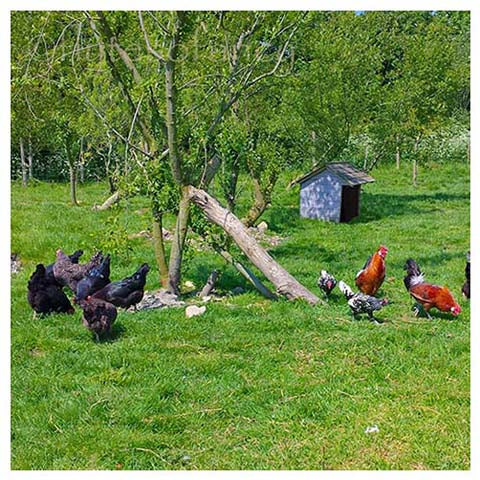
You should also consider, when choosing a site for the hen house, how to offer some natural protection for the hens from the sun, wind, and rain.
You could plant small trees in the chicken pen to provide some shade (not bushes as they may be encouraged to lay under them) or place the hen house so that they can find a shady spot.
For the worst of winter weather, it may be an idea to provide a wooden shelter of some kind, like our Chicken Shelters, or something homemade so they can at least keep out of the wind. You may think, why don’t they go inside the house for shelter, but they don’t tend to do this. To them, the house is for laying eggs and perching at night.
Chickens are generally quite robust outdoor creatures and will look after themselves, but they do not like windy weather. In summer they will love a shady dusty area and cool themselves by spreading their wings.
In winter they will equally take care of themselves outside in the snow, but again, providing they have shelter from cold winds. Do remember, they have a lovely duvet of warm feathers which they will just 'fluff up' to keep the heat in.
We don’t advise putting heating in the hen house in winter. The shock of rapid temperature changes as they go from inside to outside can be harmful.
Ground Cover in the Chicken Run
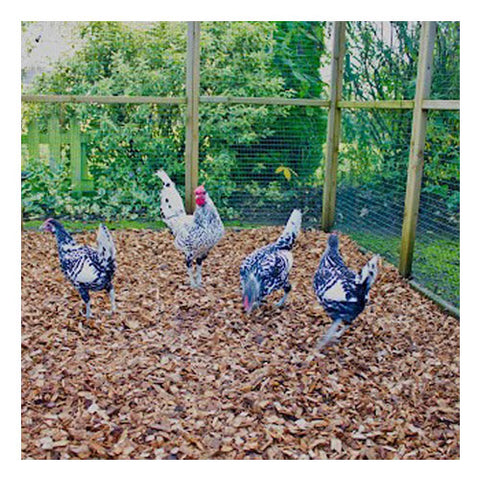
We have found that the best surface for an outside chicken run area is a Hardwood Woodchip layer (not bark which can be harmful due to mould spores).
Chickens will quite quickly remove any grass in their run. But leaving them on a muddy patch of earth is not healthy (and it will have a terrible smell).
If you have limited space, and they have turned your grass to mud, it may be worth considering giving them a permanent run area that is more manageable.
A Hardwood Woodchip surface will keep them clean, keep them permanently occupied scratching around in it for bugs and seeds all day. It can be washed through with a hose or rinsed naturally with the rain if it is open to the elements.
The Woodchip may need changing perhaps twice a year, so it is very cost-effective. You can find a lot more detail on Using Hardwood Woodchip page or from our Video Maintenance of Hardwood Woodchip.
Researching your chicken project is key to successful, trouble-free chicken keeping so do invest wisely.
For more hints and tips on this website - please visit About our Houses or Basic Chicken Keeping.
- - - -
Choosing a Chicken House ©Flyte so Fancy 2010. Updated 2023. Authors: Anne & Phillip Weymouth (Directors, Flyte so Fancy Ltd). Reproduction of part or all of this text is only possible with the express permission of Flyte so Fancy Ltd.

